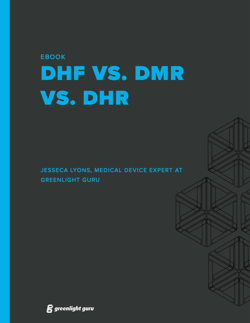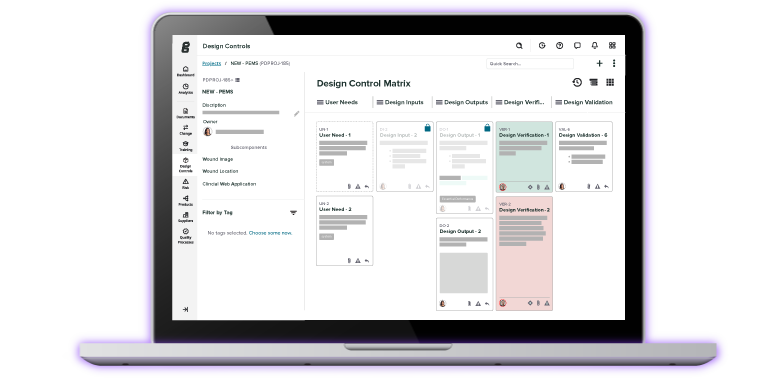Get your free PDF
Guide to DHF vs. DMR vs. DHR

Definition
The FDA mandates that medical device companies produce a device history record (DHR) that contains all documentation related to manufacturing and tracking the device, and demonstrates that the device was manufactured according to the information in the device master record.
Establishing device history records (DHR) is one of the last steps in the compliance process for medical devices. DHR is covered in subpart M of 21 CFR Part 820, which deals with general record-keeping requirements for medical device companies. Manufacturers are subject to this part whether they keep records on paper, or they use a web-based software QMS to manage documentation. The DHR serves as a production record for medical devices that you manufacture - entries into this document include acceptance records for individual units or batches of product, along with product counts, labels, and any unique product identifiers that have been applied.
FREE DOWNLOAD: Click here to download our Guide to DHF vs. DMR vs. DHR.
What should be documented in the DHR?
The requirements for documentation in the DHR can be found in 21 CFR Part 820.184, but for your convenience, we've included them below:
Most sections of 21 CFR Part 820 refer to establishing overall quality processes that affect your product design and manufacturing, but the DHR is different in that it is applied to each batch of products that you produce. The DHR mandate requires that new batches of product are tested to ensure that they meet the product specifications established in the device master record.
The mandate also ensures that batches of product are correctly labeled and assigned identification numbers. This creates traceability throughout your supply chain, enabling you to better identify sources of error in case any non-conformance issues arise with your products.
What role does DHR play in the QMS?
The DHR plays an important role in the quality system at your medical device company. Here are a few ways that companies are leveraging the DHR to improve their processes, get better results, and stay compliant with the latest standards and regulations:
- Using DHR to facilitate CAPA investigations - if a non-conformance issue or customer complaint is presented to your CAPA team, the team can determine the UDI, UPC, or other product identifier associated with the complaint. This allows your team to identify potentially problematic batches or production runs of devices and find the root cause of the issue. This allows your quality manager to determine whether non-conformance issues were confined to a specific batch of product, or if the issue is affecting products in all batches.
- Using DHR to facilitate process improvement - imagine that a batch of product passes your acceptance criteria, but is later found to contain a greater-than-acceptable proportion of non-conforming product. The ability to trace non-conformance issues back to a specific batch can help you understand the problem and redesign your acceptance criteria to prevent future occurrences of the defect.
- Using DHR to limit liability and save money - The device history record allows manufacturers to demonstrate that batches of product were tested for acceptance with the DMR before being released for distribution (More on decoding the difference between DHR and DMR here). It also allows targeted recalls if only a certain batch is found to be defective. Imagine you release 100 batches of product for distribution and receive 3 non-conformance complaints from the same batch. Referencing your DHR, you'll realize that it's just a single batch that has defects, and you can issue a targeted recall of that batch instead of recalling all 100.
Make managing your DHR easy with Greenlight Guru's QMS solution
DHR is a living document - it should be updated each time you manufacture a new batch of product with unique device identifiers and conduct tests against your acceptance criteria for the new batch of product. Greenlight Guru's QMS uses built-in document controls to ensure that your important records never get lost or deleted, and you can easily update your DHR with each new batch of medical devices that you release for distribution.
The DHR mandate also allows for linking between documents, so you'll be able to include links to the full results of acceptance testing within your DHR. Having all of your information in one place makes the audit process go smoothly and will save you time and money when applying for ISO certification or dealing with an FDA audit.
Related links
Looking for an end-to-end QMS solution that accelerates your product development integrates your quality processes with product development efforts? Click here to take a quick tour of Greenlight Guru's eQMS solution for MedTech →










